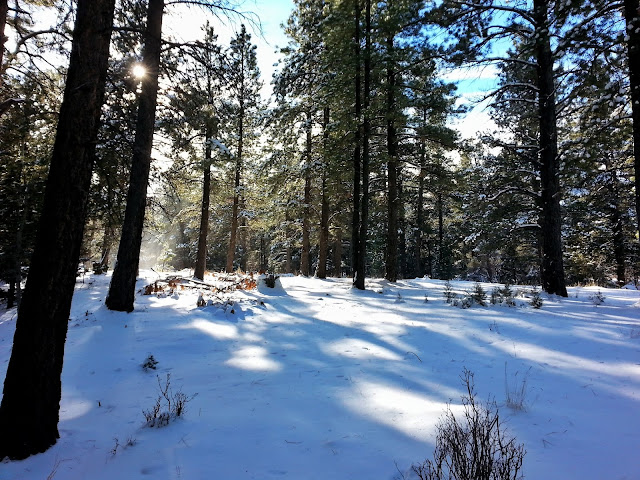It's winter which means snowshoeing for those who enjoy hiking year round. If you haven't done it before, it is great exercise and a lot of fun. I'm going to do a little series on Snowshoeing. This first post is, the basics for beginners.
FINDING THE RIGHT SNOWSHOES
Before you buy, you'll want to rent several pairs first. Get a feel for them, try different brands and kinds out. They can be fairly inexpensive to rents. In my area, it costs between $6-$9 a day for the shoes and poles.
This is actually the best way to do find the right pair for you, not one shoe workes for all and this way you'll less likely find yourself buying the wrong pair for the type of snowshoeing that you may eventually end up enjoying.
TIP: If you're not sure, try the flat terrain snowshoes first, they are a beginners snowshoe that works for most.
Make sure when you're renting, you're getting ones that are for your weight and the surface you plan to hike.
TIP: Minimal traction is great for flatter areas. But larger traction may be needed if you plan to climb mountains or do more hills.
TIP: Planning to do lots of hills? Look into the flip-up heel lifts, they can help prop your heel up and make it a little less of a workout to hike up steep terrain.
DO I NEED POLES?
Yes!
Most snowshoe rentals come with them, because yes you'll like having them for better balance.
Do you always need them? Probably not, but they can be handy to have around.
They are also helpful if you fall (which is rare) but they can make getting up much easier.
TIP: Buy or rent ski poles with ski baskets on them. Or if you have hiking poles, attach large ski baskets on them and you can make them work for both hiking and snowshoeing.
TIP: Falling is rare but most people fall when they cross their snowshoes in the back. When you first start out and before you pick up the pace, practice walking in them a little with your slightly wider stance until you get the hang of them.
ASK ABOUT THE BEST SNOWSHOE ROUTES
Never done it? Ask the outdoors store you are renting your snowshoes for tips on the best trails for beginners. Or look online and find local snowshoe groups that you can join. Generally, unless specified they'll pick safe locations and have checked for avalanche dangers.
TIP: How deep does the snow need to be? Some might say if there is snow they'll try it. But if you don't want to risk ruining the bindings or scraping up your traction I'd say 1 foot minimal, 2+ feet even better.
CHECK CONDITIONS
Before you go into the mountains (especially out west) you MUST check for avalanche dangers.
Even if you get the "clear" from your local news sources. You should always be aware of your surroundings and potential dangers.
Your snowshoes will keep you higher up on the snow. But if you are in deep powder or ungroomed trails you won't be walking on top of the snow.
You will sink, sometimes a foot or more, in fact in deep snow I've had to plow through 4 feet at times.
NEVER GO ALONE
Things can happen, even to the experienced hiker and snowshoeing while a very fun safe sport does bring a few potential dangers. So I will not promote hiking alone especially if you are a beginner, just in case something were to happen, you might need help.
If you need a snowshoe partner, look for local groups, trust me they are out there. Ask your friends, chances are if you are thinking of trying it out, you may have a family member or friend who is interested in trying it too!
WHAT TO BRING
I'll go into a full list in my next post, but as a beginner, I recommend gloves, hat, and dressing in layers some of which are waterproof. Always carry water to drink. You'll find snowshoeing can be quite the workout and you will get thirsty, and a snack is always nice.
Snowshoeing is a lot of fun and a fairly inexpensive sport. Its basically hiking in the winter with a little more of a workout, so start out with less mileage and a little less aggressive pace than you would while on a regular hike and have fun and enjoy it!
Join me tomorrow where I'll go more in-depth for the person who is looking to purchase their own pair or venture into the backcountry or ungroomed trails.
DISTANCE
You may be used to hiking 3-10 miles and in great shape. But snowshoeing is an entirely different workout. There is no shame in going shorter distances, especially when renting and trying out different pairs to see what your body is most comfortable in.
Consider hiking 20 minutes in and out, or pick a short loop hike to start.
If you get done and feel great, you can always go again, or head in a different direction to go further. Don't get yourself in a risky situation or too far out without the energy to come back.
It happens all the time, I'm sure you are used to hearing about the rescues on the news and don't kid yourself even the experienced are part of those rescues, try not to be one of them!
Subscribe to:
Post Comments
(
Atom
)






No comments :
Post a Comment
Thank you for visiting my blog! I love my readers, feel free to share your comments and opinions!